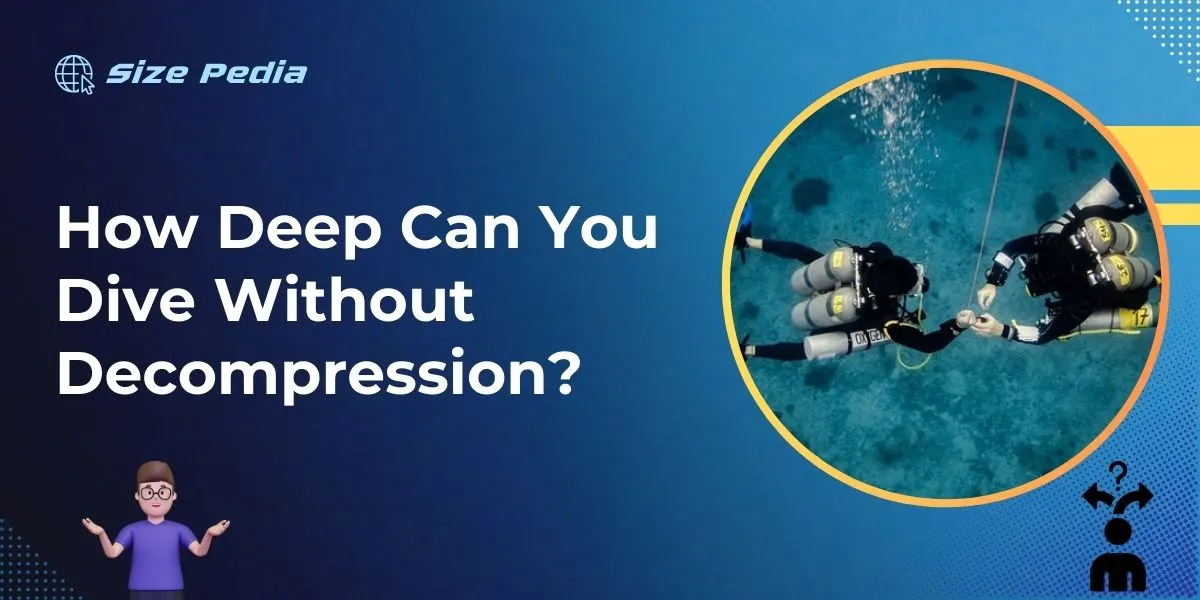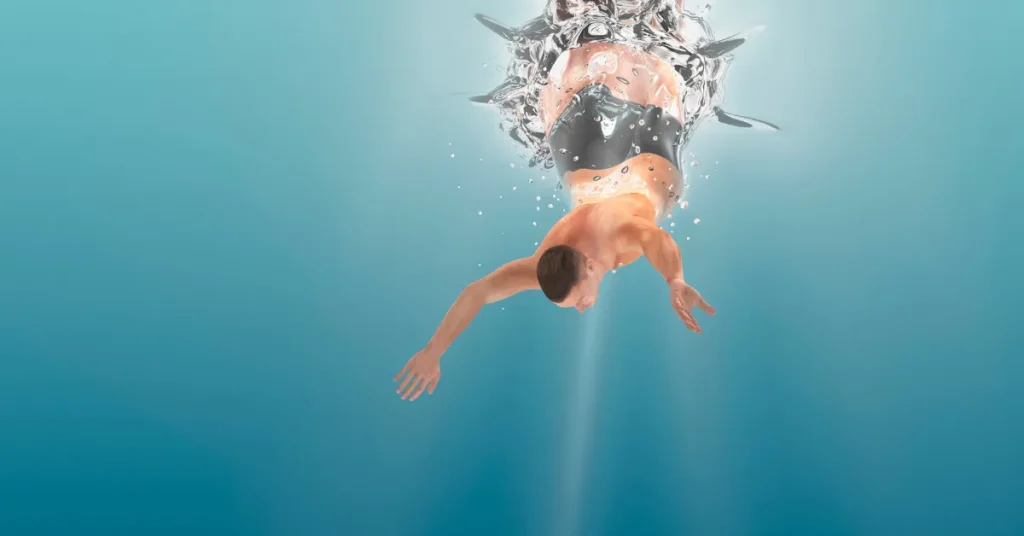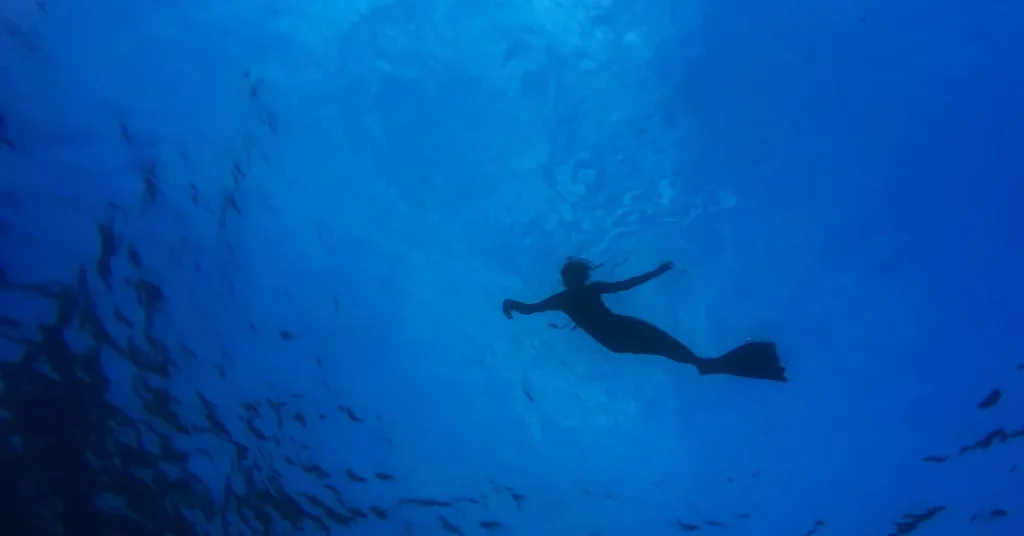The maximum depth for a no-decompression dive is generally about 130 feet (40 meters). Recreational divers adhere to this limit to avoid mandatory decompression stops.
Divers exploring the underwater world must always consider their limits, especially when it comes to depth and the need for decompression. A no-decompression dive, often referred to as a “no-deco” dive, is one where the diver can safely ascend to the surface without stops.
This practice reduces the risk of decompression sickness, a potentially life-threatening condition caused by nitrogen bubbles forming in the body.
The no-decompression limit varies depending on factors such as the dive profile and the air mixture being used.
To stay within safety margins, recreational divers typically use dive tables or dive computers that calculate these limits in real time, ensuring an enjoyable and secure diving experience.
Diving within these guidelines not only ensures divers’ safety but also maximizes their time under the waves, leading to overall more thrilling and stress-free adventures.

The Allure Of The Deep Blue
Imagine gliding through an underwater world, mysterious and serene. A realm where sunbeams dance through the water and the silence speaks volumes.
This is the beguiling call of the deep blue—a call that countless divers find impossible to resist. It’s a place where adventure and the unknown meet.
Yet, venturing into the depths demands respect for the sea’s rules, particularly when it comes to the risks associated with deep diving without decompression.
Exploring Below The Surface
Curiosity and the quest for discovery drive us deeper into the ocean’s embrace. Here, below the surface, lies a mosaic of life alien to our everyday experience.
Coral formations stand as underwater citadels, and marine creatures of every shape and hue flourish. Each descent promises new revelations, urging divers ever deeper.
- Colorful reefs: A feast for the eyes
- Wrecks: History encapsulated in the deep
- Rare species: Encounters with the ocean’s marvels
The Thrill That Comes With Depth
The privilege to witness environments few have seen comes with a wave of exhilaration. Diving deep provides a unique challenge that, when conquered, rewards with unparalleled joy and a sense of accomplishment.
Balancing the desire to explore with the necessity for safety distinguishes the experienced diver from the reckless.
| Depth (feet) | Experience |
| 20 – 40 | Beginner friendly |
| 40 – 60 | Novice depth limits |
| 60 – 100+ | Advanced exploration |
Note: Divers must adhere to safety guidelines, respect their training, and understand their limits to enjoy the depths responsibly. The deeper you dive, the more crucial these considerations become.
Physics Of The Deep: Pressure And Gases

When you dive into the ocean’s depths, the water above exerts pressure on your body. Imagine a stack of weights pushing down on you, increasing with every foot you sink.
This is the challenge divers face; not just the mystery of the deep, but the increasing squeeze of water pressure.
The Role Of Pressure In Underwater Exploration
Pressure increases as divers go deeper. At approximately 33 feet below the sea surface, the pressure is at two atmospheres, double what we experience on land. This means that the deeper you dive, the more pressure affects your body and the gases you breathe.
Every diver must respect these invisible forces to dive safely without decompression stops. This means staying within a depth where the body can adjust and where no-decompression limits are not exceeded.
Decompression sickness can occur if divers ascend too quickly. The pressure decrease causes gases to form dangerous bubbles in a diver’s body. Divers must rise slowly, often making stops to adjust to changing pressure levels.
Breathing Underwater: Gas Dynamics
The air we breathe is under pressure underwater, and this has profound effects on a diver’s body.
Gases like nitrogen dissolve more in our blood at high pressure. It’s like shaking a soda can; pressure keeps the fizz in, but when the can opens, bubbles erupt.
| Depth (feet) | Ambient Pressure (atmospheres) | Time Limit Without Decompression |
| 20 | 1.6 | Unlimited |
| 40 | 2.2 | 140 minutes |
| 60 | 2.8 | 40 minutes |
| 100 | 4.0 | 20 minutes |
Divers breathe different gas mixtures to adjust to these conditions. Normal air works for shallow dives. But for deeper exploration, special mixtures like nitrox or trimix can be used.
These mixtures change the way gases act under pressure, helping divers stay longer at depth without needing decompression.
- Scuba tanks have compressed air or gas mixtures.
- Divers adjust their buoyancy to control ascent and descent.
- Decompression sickness is a risk when ascending too fast.
- Special training is needed for using different gas mixtures.
- Check diving gear and gas mixtures before a dive.
- Plan dives within no-decompression limits.
- Ascend slowly to prevent decompression sickness.
- Use decompression stops if diving past no-decompression limits.
The Science Behind Decompression
Diving into the blue can unlock a world of underwater wonders. But to enjoy these safely, understanding the science behind decompression is key. Going deeper into the sea increases pressure.
This affects how divers’ bodies absorb and release gases. A controlled ascent is crucial for preventing decompression sickness.
Decompression Sickness: A Diver’s Nemesis
Decompression sickness (DCS) can be a serious risk for divers. Commonly known as “the bends,” it happens if you surface too quickly. Bubbles can form in your tissues and bloodstream. These can block blood flow and cause pain, dizziness, and in severe cases, death.
- Limited Dive Time: Staying within safe dive times reduces DCS risk.
- Controlled Ascent: Surfacing too fast is dangerous. Come up slowly.
- Decompression Stops: Spend extra time at certain depths when ascending.
Nitrogen Absorption And Bubbles In The Bloodstream
When diving, your body takes in nitrogen from the breathing gas. Under pressure, more nitrogen dissolves in the bloodstream. If the pressure drops too fast, like during a quick ascent, the gas turns into bubbles.
| Depth (feet) | Nitrogen Absorption |
| 20-40 | Moderate |
| 40-60 | High |
| 60+ | Very High |
Reduced depth means less nitrogen and fewer risks. Plan dives within no-decompression limits to avoid forced stops and DCS.
Decompression Limits For Divers
Understanding the depth a diver can reach without decompression is crucial. The ocean’s pressure increases with every descent.
Exceeding these limits risks decompression sickness. Knowing and respecting no-decompression limits is vital for safe diving adventures.
No-decompression Limits (ndls) Explained
A no-decompression limit (NDL) is the maximum time a diver can spend at a certain depth without needing decompression stops during ascent.
Staying within NDLs means divers can surface without long waits. Divers use dive tables or computers to track these limits.
NDLs are not constants. They adapt with your depth and time underwater. Shorter times allowed at greater depths are the norm. Diving within NDLs ensures a safer return to the surface.
Factors Affecting Diver’s Ndl
- Previous Dives: Recent dives impact your body’s nitrogen levels. This affects your NDL.
- Altitude: Diving in higher altitudes requires adjusted NDLs due to lower atmospheric pressure.
- Water Temperature: Cold environments can reduce NDLs, as the body works harder to stay warm.
- Physical Fitness: Good fitness can improve resilience to pressure changes and affect NDLs positively.
- Age and Health: Personal health and age factor into how your body handles decompression.
Dive computers personalize NDL calculations. They take into account various factors to keep dives within safe limits. Always plan your dive with your specific circumstances in mind to stay within safe NDLs.
Remember, exceeding NDLs without proper decompression increases health risks. Always dive with a plan and a way to monitor your NDLs to ensure an enjoyable and safe underwater journey.
Maximizing Dive Time Safely
Diving into the deep blue sea is an adventure many dream of. To do it safely is crucial for every diver. Understanding how deep you can dive without requiring decompression stops is essential.
By maximizing dive time safely, you get the best underwater experience. You must plan properly and use the right tools. This ensures you enjoy the depths without risking decompression sickness, also known as ‘the bends’.
Dive safety is paramount. It requires attention to detail and respect for underwater limits.
Planning No-decompression Dives
Plan your dive correctly. This means knowing your dive limits. A no-decompression dive, or ‘no-deco dive’, needs careful planning:
- Calculate the maximum depth. Use dive tables or dive computers.
- Assess dive duration. Stay within the safe bottom time.
- Check your gear. Ensure it’s suitable for your dive plan.
- Look at environmental factors. These include currents and water temperature.
Technology And Tools To Extend Bottom Time
Modern technology increases dive time while keeping safety a priority:
| Tool | Function | Benefit |
| Dive Computers | Monitors depth and time | Gives real-time no-decompression limits |
| Nitrox | Higher oxygen mix | Extends no-decompression limits |
| Rebreathers | Recycles air | Lowers gas consumption, longer dives |
Pair these tools with solid preparation. Knowledge of their usage is key to a safer, longer dive.
Diving Beyond Traditional Limits

Diving beyond traditional limits stirs the soul of every adventure-seeking diver. The underwater world holds fascinating secrets, often lying deep beneath the waves.
To explore these depths, divers push the boundaries of what’s possible, venturing far beyond the conventional scuba diving limits.
Let’s plunge into the realm of deep diving and uncover the methods and safety protocols necessary for these exhilarating excursions.
Deep-diving Techniques For Extended Ranges
Bold adventurers aiming to reach new depths employ specialized deep-diving techniques. These methods extend divers’ range, enabling them to witness the marvels that lie far below the surface.
- Trimix Diving: Combining oxygen, nitrogen, and helium reduces the narcotic effect of nitrogen, allowing for clearer thinking at depth.
- Technical Diving: With advanced equipment and rigorous training, divers can extend their underwater journeys substantially.
- Rebreathers: These devices recycle exhaled gas, reducing bubble formation and allowing for longer, quieter dives.
| Technique | Depth Range | Purpose |
| Recreational Diving | Up to 40 meters | Leisure and exploration |
| Technical Diving | 40 to 100+ meters | Extended depth and time |
| Saturation Diving | 100+ meters | Commercial and research |
Training And Safety Measures For Deeper Dives
To ensure safety at great depths, divers seek extensive training and follow strict safety precautions.
- Certification: Acquire the necessary certifications specific to deep-diving and technical diving.
- Dive Planning: Meticulously plan each dive, accounting for gas mixtures, decompression stops, and emergency scenarios.
- Health Checks: Undergo fitness assessments to tackle the physiological challenges deep dives present.
Equally vital is the adherence to buddy system protocols and the presence of a reliable dive team.
Communication, both underwater and with surface support, is crucial. Preparing for potential hazards, such as decompression sickness, becomes even more important as depth and dive time increase.
FAQs About How Deep Can You Dive Without Decompression
What Is The No-decompression Limit For Divers?
The no-decompression limit (NDL) varies based on depth and time underwater. Recreational dives typically have NDLs ranging from 20 minutes at 30 meters (100 feet) to several hours at shallower depths. Divers must ascend before exceeding this limit to avoid mandatory decompression stops.
How Does Depth Affect Diving Without Decompression?
Depth profoundly affects diving as increased depth shortens no-decompression limits due to higher nitrogen absorption by the body. Deeper dives require more careful planning and shorter bottom times to avoid decompression sickness, also known as the bends.
Can Diving Within Safety Limits Prevent Decompression Sickness?
Diving within safety limits, which include adhering to the no-decompression limits and following proper ascent rates, significantly reduces the risk of decompression sickness. It’s crucial for divers to plan their dives and monitor their dive time and depth closely.
What Is Decompression Sickness In Scuba Diving?
Decompression sickness, or ‘the bends’, is a condition arising from dissolved gases, mostly nitrogen, forming bubbles in body tissues due to rapid decompression. Symptoms can range from joint pain and dizziness to paralysis and death if not treated promptly with recompression therapy.
Conclusion
Diving depths without decompression are not one-size-fits-all. Safety and training dictate limits, typically around 18-30 meters for recreational divers. Beyond that, specialized equipment and skills are crucial.
Remember, while exploring beneath the waves can be thrilling, respecting your body’s limits and dive tables ensures you resurface with only awe-inspiring stories to share.
Dive smart, stay safe.
